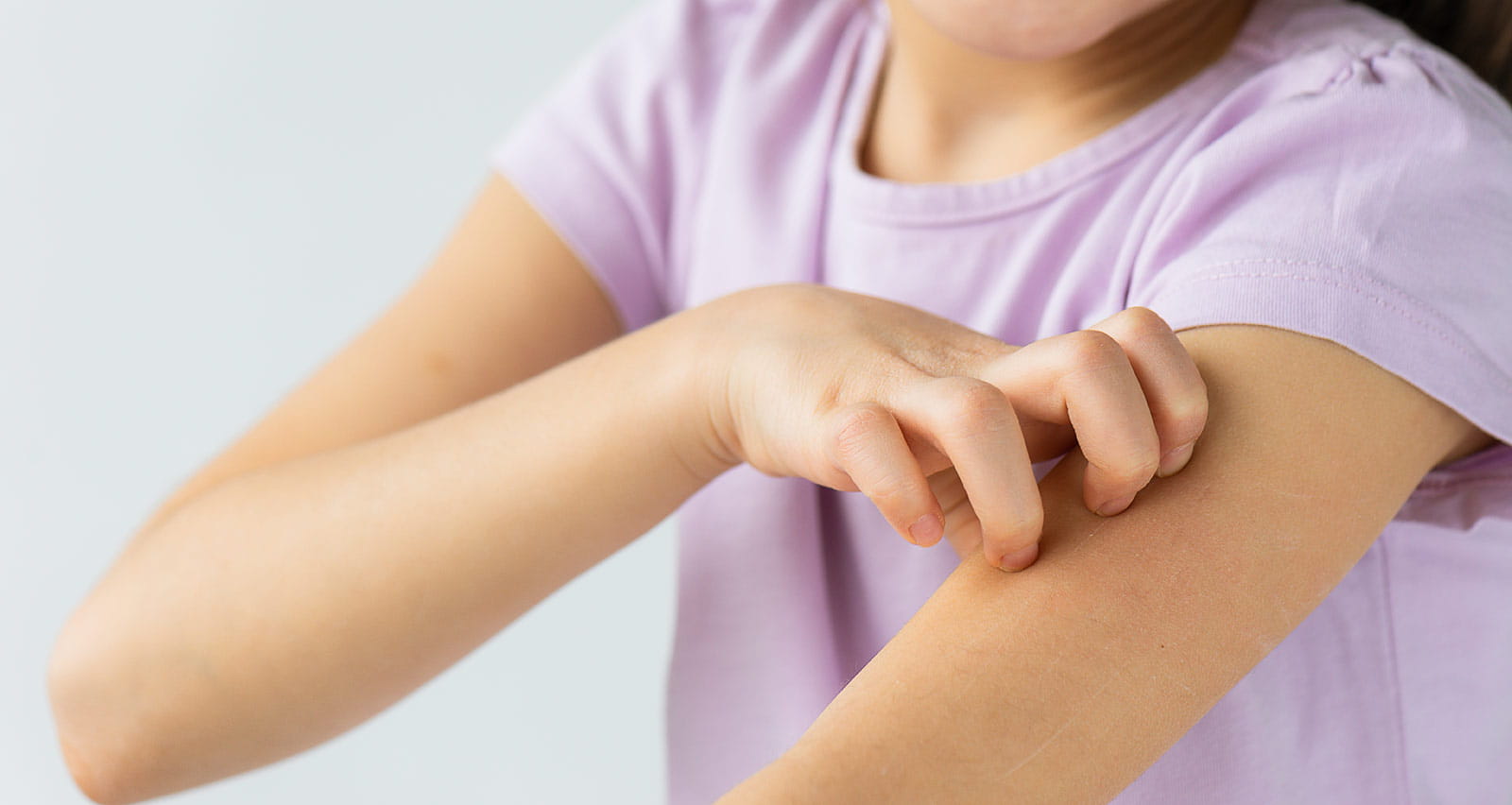
Hives & Angioedema in Children
Hives, also known as urticaria, is a sudden outbreak of itchy, red and swollen areas on the skin. It often occurs as an allergic reaction from eating certain foods or taking certain medicines. Angioedema causes swelling in the deeper layers of skin, often around the face and lips. It can occur with hives or alone.
Short-lived (acute) hives and angioedema are common conditions. In general, they are harmless, resolve within in a day and do not leave any lasting marks even without treatment. Hives that last longer than six weeks are called chronic hives and are less likely due to food or environmental allergy.
Angioedema can be life-threatening if swelling of the tongue or throat obstructs the airway. Call 9-1-1 immediately if this occurs.
Schedule an Appointment Today
If your child is experiencing a severe allergic reaction, please call 9-1-1 or go to the nearest Emergency Room. If you need an appointment following an acute reaction, please call 216-844-3237.
Symptoms of Hives & Angioedema
Hives
The main symptom of hives are welts that:
- Are skin-colored or reddish on white skin; purplish on black and brown skin
- Cause mild to severe itching
- Are as small as mosquito bites or many inches wide
- Appear round, oval or worm-shaped
- Appear alone, in a group or connect with each other to cover larger areas of skin
- Go away within 24 hours in one spot but come back in another spot
Most hives appear quickly and resolve within 24 hours: this type is referred to as acute hives. Chronic hives can last for months or even years.
Angioedema
- Swelling, especially around the eyes, cheeks or lips, though the hands, feet and genitals can also be affected
- In more severe cases, angioedema can cause breathing difficulties, abdominal pain and dizziness
Causes of Hives & Angioedema
Hives
Hives occur when blood plasma leaks from small blood vessels in the skin. This happens when the body releases histamine, a chemical that defends against harmful substances.
Triggers for hives include:
- Infections and illness: Common infections that can cause hives include colds and some bacterial and fungal infections. Other illnesses that can trigger hives include vasculitis, lupus and thyroid disease.
- Foods: Many foods are known to trigger hives, among them peanuts, tree nuts, soy, eggs, milk, shellfish and fish.
- Medications: A number of medications can cause hives, most frequently aspirin, in addition to NSAIDS such as ibuprofen (Advil, Motrin IB, others), naproxen sodium (Aleve). A variety of other prescription and non-prescription medications can also cause hives.
- Insects: Insect bites and stings cause hives in some children.
- Exercise: Some children and adults can develop a lung obstruction and/or lose consciousness from hives that occur as a result of exercise. This a severe reaction is called exercise-induced anaphylaxis. Call 911 immediately if this occurs.
Angioedema
The cause of your child’s angioedema depends on the type of angioedema they experience. The four main types of angioedema are:
- Allergic angioedema: An allergic reaction, such as a reaction to peanuts, causes the swelling. This sometimes occurs in combination with anaphylaxis.
- Idiopathic angioedema: This type of swelling occurs regularly and without an identifiable cause.
- Drug-induced angioedema: The swelling occurs as a side effect of taking certain medications, most often NSAIDS and angiotensin-converting enzyme (ACE) inhibitors.
- Hereditary angioedema: The cause of the swelling is genetic (inherited from the child’s parents) or due to a new genetic mutation in the individual.
Risk Factors for Hives & Angioedema
Your child may be at increased risk of hives and/or angioedema if:
- He or she already had hives or angioedema
- He or she has had other types of allergic reactions
- You have a family history of hives or hereditary angioedema
How Are Hives and Angioedema Diagnosed in Children?
Your child’s healthcare provider can diagnose hives and angioedema in your child by performing a thorough physical examination and gathering a full family medical history. Your child’s doctor may also order certain blood tests or an allergy skin test to aid in the diagnosis.
Treatment
If your child’s symptoms are mild, they may not need treatment: hives and angioedema often clear up on their own. However, treatment can offer relief from intense itching and other uncomfortable symptoms.
Treatment for Hives
If your child has hives, treatment will depend on his or her symptoms, age and general health. If food or another known trigger is the cause of your child’s hives, you can take steps to avoid future outbreaks by helping them avoid the trigger.
Otherwise, antihistamines are often effective in treating hives. Antihistamines reduce itching, swelling and other allergy symptoms. Antihistamines that your child’s healthcare provider may prescribe include:
- Cetirizine
- Levocetirizine
- Fexofenadine
- Loratadine
- Hydroxyzine
- Diphenhydramine
Treatment for Angioedema
Treatment depends on which type of angioedema (general, hereditary, acquired) your child has. In most cases, medications are needed to help manage the symptoms. For some patients, medications will only be needed when flare ups occur, while others will need to take medication daily. Your child’s doctor may recommend that your child take:
- An over-the-counter antihistamine
- A prescription antihistamine
- An anti-inflammatory drug such as prednisone
If your child has hereditary angioedema, his or her doctor may prescribe medication that relieves symptoms and keeps levels of certain proteins in the blood where they need to be in order not to cause symptoms.
Prevention
To lower your likelihood of experiencing hives or angioedema, take the following precautions:
- Avoid known triggers: If you know what triggers your hives, try to avoid that substance.
- Bathe and change your clothes: If pollen or animal contact has caused your hives in the past, take a bath or shower and change your clothes after exposure to pollen or animals.
Schedule an Appointment Today
To schedule an appointment with one of our highly trained, compassionate pediatric allergist/immunologists, call 216-844-3237.


